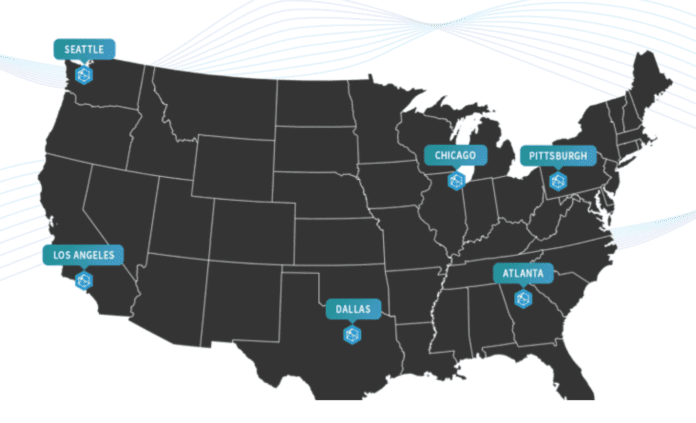Edge computing sites will be pre-integrated to support CBRS
There’s broad consensus in the telecom industry that building out edge infrastructure will be key to delivering latency-sensitive 5G use cases, as well as enabling enterprise and industrial initiatives that fit under the umbrella of digital transformation. But who will lead that build out is still a nascent question in terms of whether operators will take charge or new market entrants can capitalize on the opportunity of providing edge as-a-service.
Vapor IO was an early-mover in the space, raising significant capital and securing key partnerships, and ultimately developing its Kinetic Edge, described by the company as an “infrastructure architecture that uses software and high-speed connectivity to combine multiple micro data center facilities into a single logical data center. For developers and operators, it presents a geographically-dispersed collection of micro data centers as a single virtual facility with multiple availability zones.”
Today Vapor IO announced the establishment of the Kinetic Edge Alliance, an industry consortium dedicated to scaling out edge computing infrastructure and services. Deployment partners are Federated Wireless, Linode, MobiledgeX, Packet and StackPath. Technical partners are Alef Mobitech, Detecon International, Hitachi Vantara, New Continuum Data Centers, Pluribus Networks and Seagate Technology.
Vapor IO CEO Cole Crawford, in an interview with RCR Wireless News, explained: “One of the things I’ve been sort of personally trying to solve for was getting rid of this chicken and egg situation for the edge,” he said. “In my mind 5G needs the edge but the edge doesn’t necessarily need 5G. So we’re going to build. We took the chicken and egg equation away and built stuff. There’s deployments in Chicago; there’s actual stuff happening there.”
In addition to live sites and further expansion in Chicago, the Kinetic Edge Alliance will focus efforts this year on deployment in Pittsburgh, Atlanta, Dallas, Los Angeles and Seattle. Each market will have at least three edge sites and the group plans to get a foothold in an additional 24 markets over an 18- to 24-month period.
Back to Crawford’s comment that edge doesn’t necessarily need 5G–private networks for enterprise and industrial applications are increasingly being viewed as an optimal solution. In the U.S., the 3.5 GHz Citizens Broadband Radio Service Band has been tapped for three-tiered shared access that protects incumbent users while opening up the mid-band spectrum for new users. To that end, Federated Wireless, which developed a spectrum access system that manages use of the band, is working through the Kinetic Edge Alliance to lay the groundwork for CBRS.
In a statement, Federated Wireless CEO Iyad Tarazi said, “By pre-integrating our CBRS controller with the Kinetic Edge, we are able to ensure last mile wireless connectivity in every one of the Alliance’s locations, eventually spanning the entire country. This will unleash a tsunami of edge-native and edge-enhanced applications for private networks. Nothing like this has ever been created before and we’re proud to be a part of this movement.”
“We’re a little bit in uncharted territory in the U.S. around how disruptive CBRS and 60 GHz and 6 GHz will be to the licensed spectrum providers,” Crawford said.

